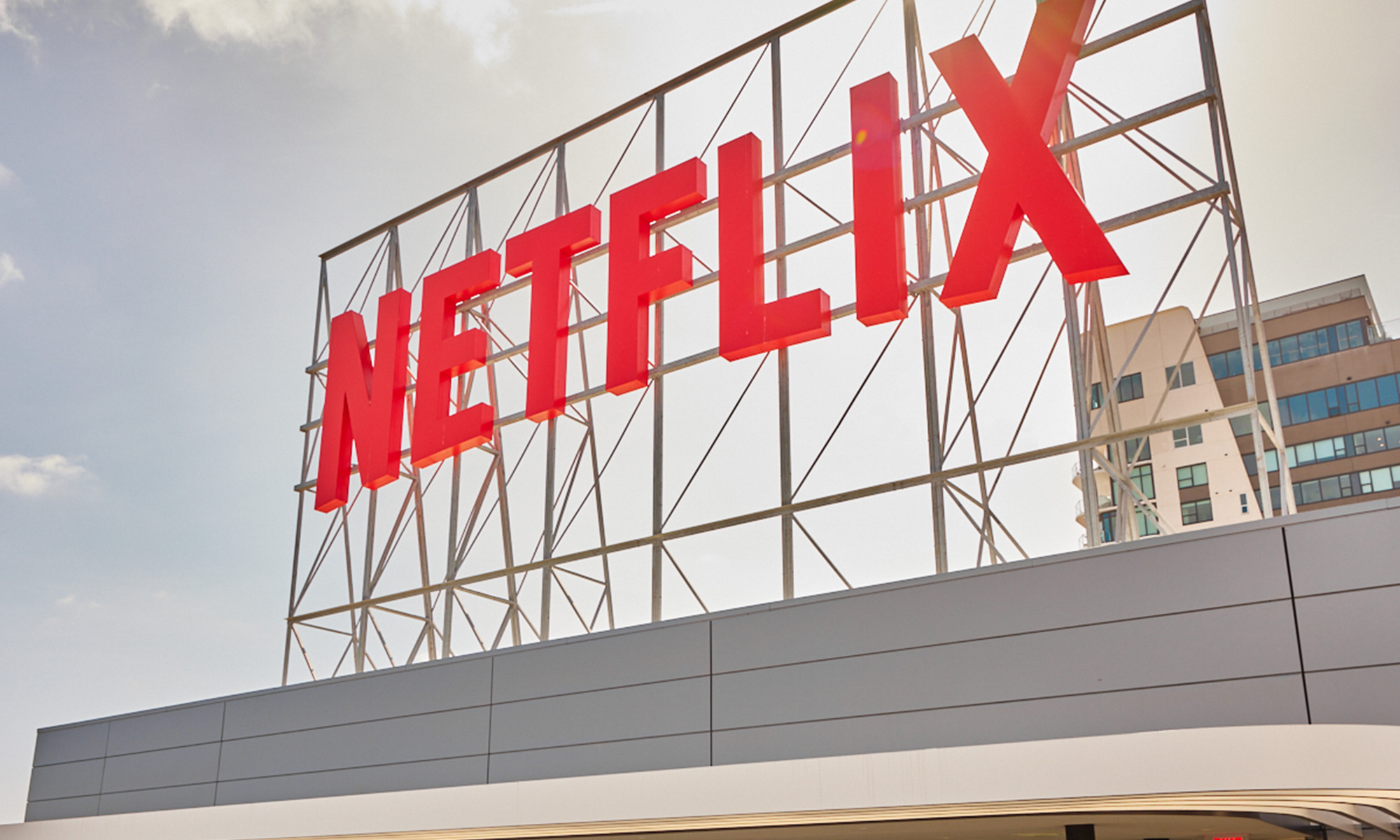The calendar has turned to September, and that means that Netflix (NFLX +0.12%) is about to embark on one of the biggest international expansion projects ever. Later this month, Netflix service will become available in France, Germany, Austria, Switzerland, Belgium, and Luxembourg.
Netflix is already growing rapidly. Last quarter, revenue rose 25% year-over-year. Expanding into 6 more markets (including 2 large ones in France and Germany) will keep revenue rising quickly. However, strong revenue growth does not guarantee stock price appreciation.

Netflix will add 6 new markets in Europe later this week (Photo: The Motley Fool)
Netflix trades at a very high valuation: more than 100 times expected 2014 earnings. Costs are also rising nearly as quickly as revenue is growing -- and international expansion will be expensive. Just how successful must the European expansion be for Netflix shares to keep moving higher? Read on to find out.
Bringing Netflix to more of Europe
Today, the Netflix streaming service is available in a handful of European countries: the U.K., Ireland, Denmark, Norway, Sweden, Finland, and the Netherlands. Those 7 countries have 35 million-40 million broadband households who might potentially subscribe to Netflix.
Netflix's upcoming expansion will nearly triple its addressable market in Europe, as its 6 new markets have more than 60 million broadband households, according to Netflix. This will bring its total international addressable market to roughly 180 million households: twice the size of the domestic market.
Expansion will be costly
International expansion is a long-term play for Netflix. The company began expanding beyond the U.S. nearly 4 years ago, and its international operations have posted cumulative losses of more than $800 million since then.
Netflix's international segment has yet to generate a contribution profit in any quarter. It would have been on track to reach breakeven in Q3 (or at worst, Q4) of 2014. However, the looming expansion in Europe will be dilutive to earnings. For Q3, Netflix has projected that its international contribution loss will widen sequentially from $15 million to $42 million.

Netflix needs to invest heavily in content when it enters a new market (Photo: The Motley Fool)
Indeed, Netflix's track record in international markets shows that it takes 2-3 years for a typical market to reach breakeven. The long ramp-up to profitability is inherent in Netflix's business model. Whereas cable TV companies pay for content on a per-customer basis, Netflix generally pays a flat fee that does not vary based on subscriber totals.
When Netflix launches in a new market, it must first invest in content deals in order to attract potential new customers. It also needs to spend money on advertising in order to build consumer awareness. Yet it starts with no subscribers (and thus no revenue). This leads to significant initial losses in new markets.
Quantifying the cost of expansion
The near term cost of expanding in Europe will be significantly higher than the $27 million projected increase in Netflix's international contribution loss this quarter. Netflix will not launch its new markets until later in September, so it will only be paying a small portion of its quarterly content bill.
The company also tends to ramp up its marketing spending after it launches its new markets. Lastly, Netflix increases its content spending significantly in the years following a new market launch, according to CFO David Wells. These 3 factors mean that international contribution losses will spike higher again in Q4.
The closest parallel to the upcoming European expansion was Netflix's January 2012 entry into the U.K and Ireland. Launch-related costs drove a $43 million sequential increase in Netflix's international contribution loss in Q1 2012.
The new markets launching this month have nearly 3 times as many broadband households as the U.K. and Ireland. As a result, the initial quarterly contribution loss from these new territories could be almost 3 times the size of the $43 million hit from the U.K. and Ireland launch: perhaps $100 million-$120 million.
Offsetting this, all of Netflix's other international markets have been steadily reducing their contribution losses each quarter. Netflix's international contribution loss is still likely to rise substantially beyond $42 million in Q4, and could go as high as $100 million.
The long-term potential for European expansion
Nobody really knows how profitable international markets can be in the long run, as none of Netflix's markets have yet reached maturity. Domestic profitability trends may be the best proxy for future international profitability. That said, some of Netflix's new markets may be harder to penetrate than the U.S. market, due to higher competition and/or lower interest in Hollywood content.
Netflix launched streaming video in the U.S. in early 2007. In late 2010 (about 4 years ago), Netflix began treating streaming as its primary offering, not just as an add-on to DVD rental plans. By the end of that year, Netflix already had about 20 million U.S. subscribers: a testament to its having built a strong brand in the U.S. during the previous decade.

Netflix dominates U.S. streaming thanks to its first-mover position (Photo: The Motley Fool)
Based on this strong starting position, Netflix expects to surpass a 30% domestic contribution margin next year. Nearly half of all U.S. broadband households (or approximately 45 million households) will subscribe to Netflix, enabling that strong margin result. Beyond that, management is still evaluating how far margins could expand.
Netflix's new international markets could potentially reach a 30% contribution margin one day -- but that day is far away. In the U.S., Netflix has been increasing its market penetration by about 7 percentage points per year recently.
At that rate, it would take 7 years for Netflix to reach 50% penetration of a new market. That appears to be the approximate level necessary to produce a 30% contribution margin -- at least based on Netflix's current business model.
However, if a 30% contribution margin is ultimately attainable, Netflix can afford to be patient. Based on the size of Netflix's new European markets (more than 60 million broadband households), reaching a 50% penetration rate and 30% contribution margin would result in an annual profit stream of more than $1 billion. That would fully justify the start-up costs, which will almost certainly be less than $1 billion.
Foolish final thoughts
If Netflix can be anywhere near as successful in its new European markets as it has been in the U.S., its international expansion will be a good thing for long-term investors. Netflix believes it can ultimately convert two-thirds or more of U.S. households to Netflix subscribers -- but even with 50% penetration (or a little less), it can earn strong margins.
The risk for investors is if Netflix is significantly less popular in its new markets. There are fewer English speakers than in its current European markets, which could force Netflix to rely more on local content than on Hollywood content (its specialty).
Additionally, competitors have had more time to react in Netflix's new markets, whereas Netflix had a stranglehold on the U.S. and Canadian markets before other media companies realized that streaming video could be a huge business.
Despite these obstacles, Netflix has a good shot to be very successful in continental Europe. If Netflix can increase its market penetration there by at least 5 percentage points per year in the next few years, investors can be satisfied that those markets will ultimately produce big profits.






